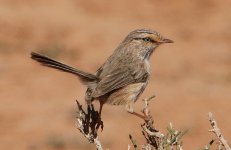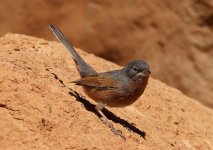dwatsonbirder
Well-known member
Good afternoon.
I am looking to return to Morocco this year following an enjoyable (but not particularly birdy) trip a couple of years ago. I'm hoping to catch up with the birds I've missed previously, but at present I'm looking at the 9th - 16th March.
Would anybody be kind enough to comment on whether this be too early for the following species; Seebohm's, Red rumped and Magreb wheatears, Blue cheeked bee-eater, Cream coloured courser, Tristram's warbler. I know some of these species are relatively sedentary (or altitudinal migrants) but want to maximise chances of encountering these.
Also, there are a plethora of trip reports online, would anybody be able to point me in the direction of some that contain locations for some of the more specialist species (Pharaoh EO, Thick billed lark, Desert sparrow) - I've order the Gosney guides, but any up to date information would be hugely appreciated.
Thanks in advance, and I wish you all a bird-filled and enriching 2018.
I am looking to return to Morocco this year following an enjoyable (but not particularly birdy) trip a couple of years ago. I'm hoping to catch up with the birds I've missed previously, but at present I'm looking at the 9th - 16th March.
Would anybody be kind enough to comment on whether this be too early for the following species; Seebohm's, Red rumped and Magreb wheatears, Blue cheeked bee-eater, Cream coloured courser, Tristram's warbler. I know some of these species are relatively sedentary (or altitudinal migrants) but want to maximise chances of encountering these.
Also, there are a plethora of trip reports online, would anybody be able to point me in the direction of some that contain locations for some of the more specialist species (Pharaoh EO, Thick billed lark, Desert sparrow) - I've order the Gosney guides, but any up to date information would be hugely appreciated.
Thanks in advance, and I wish you all a bird-filled and enriching 2018.








